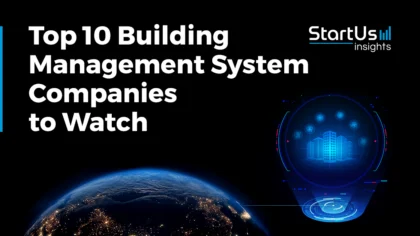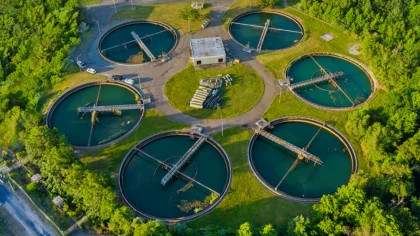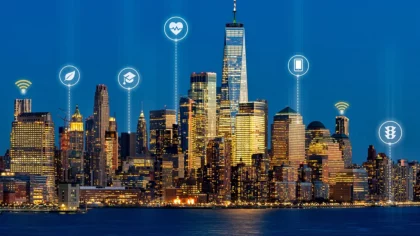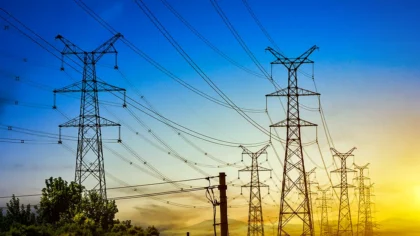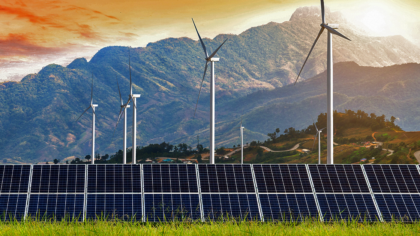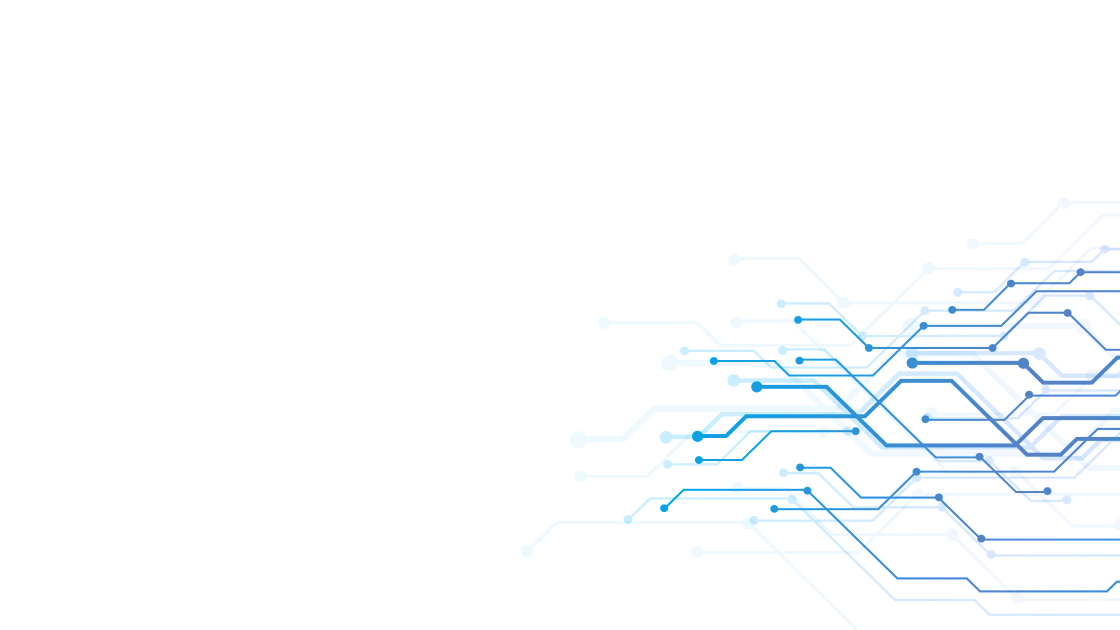Novel water resources management solutions are tackling common industry challenges — from resource scarcity to increasing environmental regulations. Emerging technologies enhance water conservation and distribution. For example, AI-based systems analyze water usage patterns to optimize distribution and reduce waste, while IoT sensors provide real-time data on water quality for responding immediately to potential contamination risks. Additionally, drone technology for infrastructure inspections detects leaks and other maintenance issues in hard-to-reach areas.
Cloud-based platforms further streamline data sharing and decision-making across stakeholders, while blockchain ensures transparency in water sourcing and consumption tracking. Industry experts must recognize the potential of these water resources management technology advancements and implement them strategically to address immediate operational pressures and long-term goals. The integration of such technologies improves operational efficiency and aligns with growing sustainability demands.
Why should you read this report?
- Gain insights into top 10 technologies impacting water management.
- Learn about three practical use cases for each technology.
- Meet 10 innovative startups advancing these technologies.

Key Takeaways
- Cloud Computing
- Use Cases:
- Real-time Monitoring & Analysis
- Remote Management & Control
- Simulation & Modeling
- Startup to Watch: AQUATRAX
- Use Cases:
- Artificial Intelligence (AI)
- Use Cases:
- Predictive Maintenance
- Water Quality Monitoring
- Demand Forecasting
- Startup to Watch: EFAS Technologies
- Use Cases:
- Augmented Reality (AR) & Virtual Reality (VR)
- Use Cases:
- Operator Training
- System Design & Visualization
- Remote Assistance
- Startup to Watch: AVUS
- Use Cases:
- Big Data & Analytics
- Use Cases:
- Water Usage Analytics
- System Performance Monitoring
- Environmental Impact Analysis
- Startup to Watch: Tenchijin
- Use Cases:
- Blockchain
- Use Cases:
- Asset Management
- Regulatory Compliance
- Automated Transactions
- Startup to Watch: Botanical Water Technologies
- Use Cases:
- CleanTech
- Use Cases:
- Energy-efficient Treatment
- Renewable Energy Integration
- Water Recycling
- Startup to Watch: Aquaseek
- Use Cases:
- Connectivity Technologies
- Use Cases:
- Remote Monitoring
- Smart Grid Management
- IoT Implementation
- Startup to Watch: Watrix
- Use Cases:
- Internet of Things (IoT)
- Use Cases:
- Smart Metering
- Infrastructure Monitoring
- Process Automation
- Startup to Watch: WI.Plat
- Use Cases:
- Advanced Robotics
- Use Cases:
- Inspection & Maintenance
- Water Quality Monitoring
- Cleaning & Treatment
- Startup to Watch: Pura Link
- Use Cases:
- Nanotechnology
- Use Cases:
- Nanofiltration
- Contaminant Removal
- Sensor Development
- Startup to Watch: nanobox
- Use Cases:
Water Resources Management Industry FAQs
What are smart water technologies?
Smart water technologies refer to the integration of advanced digital tools and systems designed to enhance water management through precise monitoring, real-time data analysis, and automation. These technologies include IoT-enabled sensors that continuously track water quality and flow rates while providing utilities with insights to detect leaks, contamination, or inefficiencies in distribution networks. AI-powered analytics use this data to optimize water usage, predict equipment failures, and improve the scheduling of maintenance activities.
Smart metering systems offer detailed consumption data and promote more efficient use of water resources. Additionally, cloud-based platforms allow seamless data sharing and decision-making across multiple stakeholders to ensure coordinated efforts in resource management. These technologies streamline operational processes and enable more sustainable and resilient water infrastructure by allowing for quick, data-driven responses to emerging issues.
What technologies are used in water management solutions?
In modern water treatment, advanced technologies enhance efficiency, sustainability, and precision.
- Membrane filtration technologies, such as reverse osmosis and nanofiltration, remove contaminants at a molecular level to effectively treat industrial wastewater and drinking water.
- UV and ozone disinfection systems use ultraviolet light and ozone gas to neutralize harmful pathogens without chemical additives. This ensures water safety while minimizing environmental impact.
- AI-driven predictive analytics optimize treatment processes by monitoring water quality in real-time and adjusting treatment parameters to improve efficiency and reduce energy consumption.
- Advanced electrocoagulation technology uses electric currents to coagulate and remove suspended solids, heavy metals, and other pollutants.
- Decentralized modular treatment systems provide flexible, scalable solutions for remote or smaller communities while reducing reliance on large centralized infrastructure.
How We Identify Emerging Technologies & Startups
The data in this report originates from StartUs Insights’ Discovery Platform, covering 4.7 million global startups, scaleups, and technology companies, alongside 20,000 emerging technology trends. Our platform makes startup and technology scouting, trend intelligence, and patent searches more efficient by providing deep insights into the technological ecosystem. Utilizing the trend intelligence feature, we analyze industry-specific technologies for this report, detect patterns and trends, and identify use cases along with the startups advancing these areas. Further details and capabilities are accessible via the website.
10 Emerging Technologies Impacting the Future of Water Resources Management [2025 & Beyond]
1. Cloud Computing

By leveraging cloud technologies, organizations centralize vast amounts of water-related data to enable real-time monitoring and streamlined decision-making. Technologies such as software-as-a-service (SaaS) platforms and cloud-based infrastructure allow water utilities to automate data collection from sensors, improve resource allocation, and optimize treatment processes. These cloud-based systems also support machine learning (ML) and AI algorithms to predict future water demands, detect inefficiencies, and automate operational adjustments. Additionally, cloud computing offers scalability and enables utilities to handle large datasets and integrate various digital tools eliminating local computing infrastructure constraints.
3 Practical Use Cases of Cloud Computing in Water Management
- Smart Water Metering: Cloud computing enhances smart water metering by providing a centralized platform to collect, store, and process real-time consumption data from water meters. This monitors water usage patterns, detects leaks, and implements billing more accurately. Further, it improves resource management and reductions in water wastage for overall operational efficiency.
- Hydrological Data Sharing: For hydrological data sharing, cloud computing integrates and disseminates data across multiple stakeholders. By allowing real-time access to large datasets from sensors and monitoring stations, it improves decision-making in water management and ensures timely responses to water-related challenges. This leads to more coordinated efforts and better preparedness for issues like floods or droughts.
- Integrated Water Resource Management (IWRM): Cloud-based systems unifies data from diverse sources for integrated water resource management (IWRM) to enable water management across sectors. This optimizes water distribution while improving compliance with regulatory frameworks.
Startup to Watch: AQUATRAX
US-based AQUATRAX offers a cloud-based water loss tracking system to assist water agencies in efficiently monitoring usage and reducing non-revenue water loss. The system integrates with existing automated meter reading (AMI) infrastructure, combining data from customer information systems (CIS), supervisory control and data acquisition (SCADA), and weather platforms to provide a unified view of water consumption. This real-time data tracks trends, identifies inefficiencies, and optimizes water management processes. Thus, the system reduces operational costs by automating monitoring and maintenance, while its analytics tools enable better decision-making for resource allocation and infrastructure improvements for enhancing water conservation and utility performance.
2. Artificial Intelligence

AI-powered technologies such as ML, predictive analytics, and real-time monitoring systems optimize water resource management. These technologies analyze vast datasets from water consumption, infrastructure, and environmental sensors to predict water demand, detect potential system failures, and ensure water quality standards. AI models also optimize energy use in water treatment plants and distribution networks to reduce both operational costs and carbon emissions. Additionally, AI supports the transition toward proactive maintenance by minimizing downtime and extending the lifespan of critical infrastructure.
3 Practical Use Cases of AI in Water Management
- Predictive Maintenance: AI-driven predictive maintenance allows water utilities to analyze real-time data from sensors embedded in infrastructure for predicting component failures such as pumps or valves. By addressing such potential failures before they escalate, utilities minimize downtime and reduce repair costs to enhance the reliability and longevity of their water management systems
- Water Quality Monitoring: IoT sensors provide data to AI for processing and detecting anomalies in water quality parameters such as pH, turbidity, and contaminant levels. This enables proactive identification of water quality issues, ensures timely interventions that maintain safe drinking water supplies, and minimizes the risks of widespread contamination.
- Demand Forecasting: For demand forecasting, AI models analyze historical water consumption patterns alongside external factors like weather and seasonality to predict daily and seasonal water demand accurately. This ensures optimal water distribution, reduces waste, and supports more efficient planning of water resources to meet varying demand levels.
Startup to Watch: EFAS Technologies
US-based startup EFAS Technologies develops the Global AI Leak Locator (GAILL), an AI-powered software that detects water leaks and anomalies in pipeline systems. By utilizing digital twins and AI, GAILL analyzes existing pipeline maps, pressure data, and time series flow measurements to identify and localize leaks or blockages between pipeline junctions. The software offers features such as non-invasive detection, precise localization, and real-time monitoring to eliminate hardware installations or manual inspections. It assists water utilities with faster intervention, reduced water loss, and lower operational costs to manage pipeline networks efficiently while conserving valuable water resources.
3. Augmented Reality (AR) & Virtual Reality (VR)

AR integrates digital information with real-world environments by allowing field technicians and engineers to view and interact with water systems using smart devices or AR glasses. This improves the efficiency of tasks like maintenance and asset management by accessing real-time data on equipment status and system performance. On the other hand, VR creates immersive simulations of water infrastructure for training, system design, and emergency response planning. These technologies combined with IoT sensors and geographic data manage assets more effectively, enhance operational safety, and enable remote collaboration between field teams and off-site experts for faster and more informed decision-making.
3 Practical Use Cases of AR & VR in Water Management
- Operator Training: By simulating complex water systems, operators engage in immersive, hands-on experiences that replicate real-life scenarios to master critical tasks without risk to actual infrastructure. This enhances training effectiveness and safety while reducing operational downtime
- System Design & Visualization: AR and VR offer an interactive 3D view of water infrastructure to visualize detailed layouts and detect potential design flaws before construction begins. These technologies improve planning accuracy, reduce costly modifications during project implementation, and enhance the efficiency of water resource projects.
- Remote Assistance: For remote assistance, AR enables experts to guide field workers in real-time by overlaying digital instructions onto physical environments. This eliminates in-person visits, improves repair time, and reduces travel costs while ensuring timely and precise issue resolution.
Startup to Watch: AVUS
UK-based startup AVUS develops an AR and digital twin solution for underground asset data management in water management and utility sectors. It converts existing data from sources like portable document format (PDF) and computer-aided design (CAD) files into 3D models to visualize underground infrastructure through AR on-site. By providing centimeter-accurate visualizations of pipes and cables, AVUS assists contractors, planners, and utility companies to avoid costly excavation errors and manage buried networks efficiently. It also enables hologram projection, while its As-Built application captures real-time records of existing infrastructure. These solutions save time, improve accuracy, and reduce risk by providing instant access to underground asset data.
4. Big Data & Analytics

Internet of Things (IoT) sensors, cloud computing platforms, and ML algorithms gather and process real-time data. This data improves operational efficiency, predicts infrastructure issues, and enhances water quality monitoring. By leveraging big data & analytics, utilities identify patterns and trends in water usage, optimize energy consumption, and extend the lifespan of aging infrastructure. These tools also support predictive maintenance and improve long-term planning by responding proactively to challenges such as water scarcity and infrastructure failures.
3 Practical Use Cases of Big Data & Analytics in Water Management
- Water Usage Analytics: Big data and analytics enhance water usage analytics by collecting and processing real-time data from smart meters and sensors. It provides insights into consumption patterns, detects inefficiencies, and implements data-driven conservation strategies. This granular understanding of water use allows for better demand management, reduces wastage, and supports sustainable water resource allocation across regions
- System Performance Monitoring: Big data platforms monitor infrastructure health in real-time with the integration of data from multiple sources across the water distribution network, such as pressure sensors and flow meters. This continuous performance analysis identifies potential issues like leaks or pump inefficiencies early and optimizes maintenance schedules.
- Environmental Impact Analysis: Big data technologies aggregate and analyze data related to water quality, climate patterns, and ecosystem health to assess the environmental footprint of water management operations. These insights guide informed decision-making on sustainability efforts and align water management practices with environmental regulations and conservation goals.
Startup to Watch: Tenchijin
Japanese startup Tenchijin develops the KnoWaterleak system, a smart big data-driven water leakage risk assessment and management solution. It uses optical and satellite data alongside pipeline information to estimate leak locations and assess deterioration in water pipes by considering internal and external risks like pipe thickness and land movements. KnoWaterleak features customized user interfaces, real-time cloud-based information sharing, and predictive analytics that improve over time to optimize cost and accuracy. By leveraging advanced data analytics, the system minimizes accidents, reduces maintenance costs, and supports efficient water management.
5. Blockchain

Blockchain streamlines resource tracking, water rights management, and regulatory compliance by creating tamper-proof records. For example, blockchain when combined with IoT devices monitors water quality and distribution in real time to provide a traceable log of consumption and leakage detection. Smart contracts further enhance operational efficiency by automating water trading, billing, and reporting processes for transparent agreements between users and suppliers. This technology also tackles issues like water scarcity and inefficient distribution by enabling more accurate, data-driven decision-making.
3 Practical Use Cases of Blockchain in Water Management
- Asset Management: Blockchain enhances asset management by creating decentralized, tamper-proof ledgers that record the lifecycle of physical assets, such as pipelines, pumps, and treatment facilities. This transparency secures the data related to maintenance, repairs, and performance history to improve long-term planning and asset longevity while reducing operational costs
- Regulatory Compliance: For regulatory compliance, blockchain provides a secure, immutable record of water usage, quality, and distribution, to meet the reporting requirements with accuracy. This assists in tracking and verifying compliance with environmental regulations while reducing the risk of penalties and increasing trust with regulators
- Automated Transactions: Automating transactions through blockchain streamlines water trading, billing, and resource allocation by using smart contracts that execute payments and agreements without manual intervention. This approach ensures fast, error-free transactions, reduces administrative overhead, and improves the efficiency of financial and operational processes.
Startup to Watch: Botanical Water Technologies
UK-based startup Botanical Water Technologies develops the Botanical Water Exchange (BWX), a blockchain-based water trading platform that enables the harvesting, purification, and distribution of sustainable, plant-sourced water. The BWX platform connects buyers and sellers by leveraging blockchain technology to ensure transparency, traceability, and efficiency in water transactions. It integrates water harvesting units (WHUs) that extract potable water from fruits, vegetables, and sugarcane for ingredient water or reuse. Further, its features include real-time water monitoring, blockchain-based verification through water impact credits, and a secure marketplace for trading sustainable water sources.
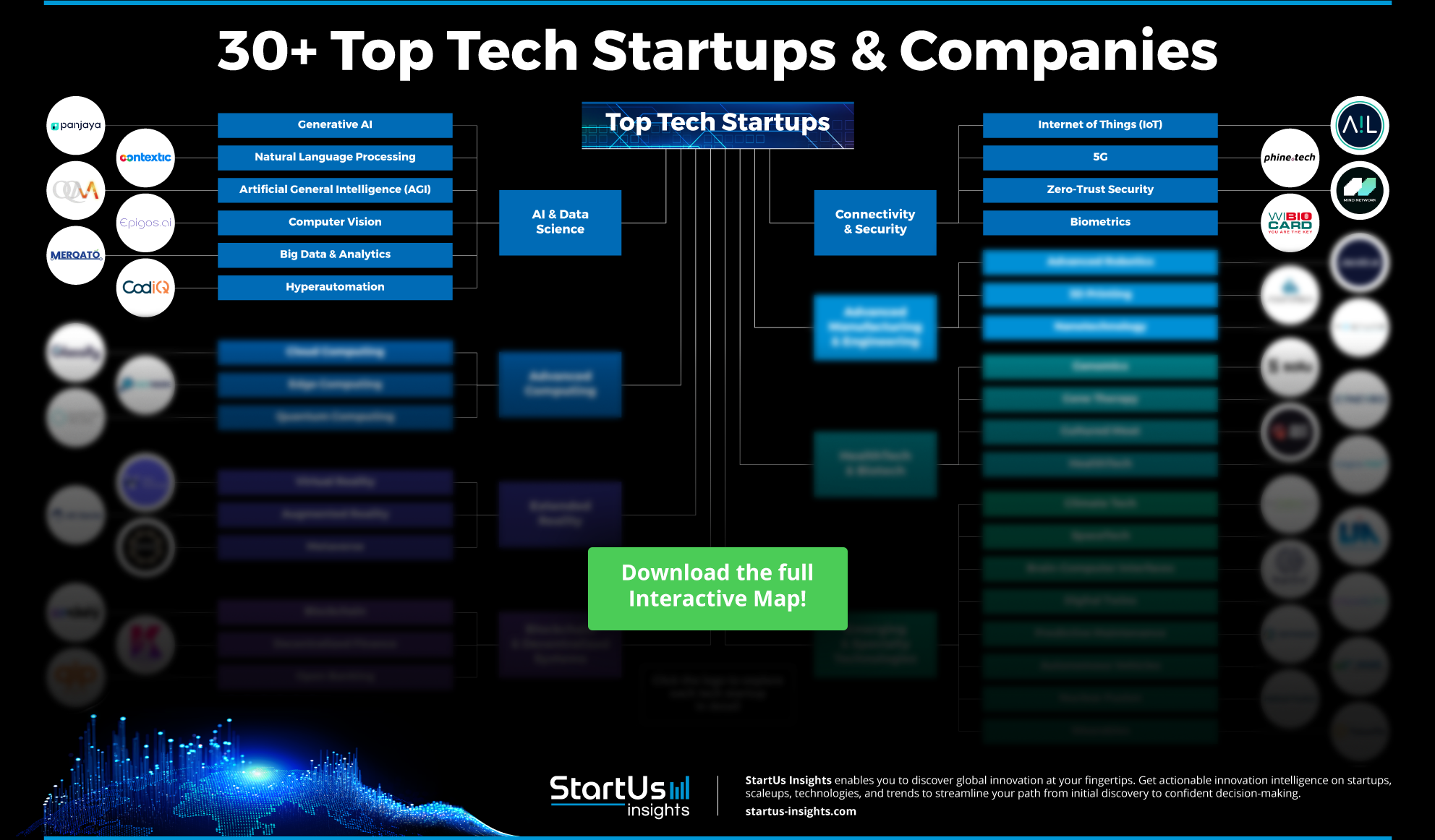
6. CleanTech

CleanTech innovations include advanced filtration systems, such as nanofiltration and electro-ceramic desalination, which purify water while minimizing energy consumption and waste. Technologies like algae-based wastewater treatment use natural organisms to remove pollutants and offer a carbon-negative solution to water recycling. Additionally, digital water platforms, integrated with sensors and AI, enable real-time monitoring and predictive maintenance for improving water use efficiency and reducing losses from leaks.
3 Practical Use Cases of CleanTech in Water Management
- Energy-efficient Treatment: Usage of advanced filtration systems, such as membrane bioreactors and low-energy desalination techniques reduce the energy required to process and purify water. These technologies lower operational costs and decrease the environmental footprint of water treatment plants to make them sustainable and cost-effective over time
- Renewable Energy Integration: Cleantech solutions incorporate solar panels, wind turbines, and bioenergy systems into water facilities to allow plants to generate clean power for their operations. This integration cuts reliance on fossil fuels and supports grid independence and resilience to reduce carbon emissions and operational costs while improving energy security.
- Water Recycling: In water recycling, cleantech reuses wastewater through technologies like advanced oxidation and electrochemical treatment by converting it into safe, reusable water for industrial or agricultural use. This improves water conservation efforts, lowers demand for freshwater resources, and supports sustainable water management practices.
Startup to Watch: Aquaseek
Italian startup Aquaseek develops atmospheric water generators (AWGs) that convert atmospheric vapor into liquid water. They use advanced sorption technology, which relies on hydrophilic materials that capture moisture from the air and release it when heated, even in low-humidity environments. This approach provides high water generation efficiency for regions with limited access to clean water.
7. Connectivity Technologies

Connectivity technologies, particularly 5G and low power wide area (LPWA) networks advance in water management by enabling faster, more efficient data transmission and control over water systems. 5G technology offers low-latency, high-speed communication, to monitor critical infrastructure such as pipelines, reservoirs, and treatment facilities in real-time. This rapid data transfer supports more responsive management, including detecting leaks, preventing contamination, and maintaining optimal water pressure across vast distribution networks. Additionally, LPWA networks enable long-range, energy-efficient communication for deploying sensors and devices in remote or hard-to-reach locations, further enhancing the reach and reliability of water management systems. Together, such connectivity technologies create a data-driven approach to manage water resources, reduce losses, and improve overall system efficiency.
3 Practical Use Cases of Connectivity Technologies in Water Management
- Remote Monitoring: Connectivity technologies like narrowband IoT (NB-IoT) and long-range wide-area networks (LoRaWAN) enable remote monitoring in water management. They provide real-time data transmission from sensors deployed throughout water systems. These low-power, wide-area networks ensure consistent communication across vast areas to monitor leaks, contamination, and equipment failures in real-time.
- Smart Grid Management: The integration of distributed energy resources, water infrastructure, and connectivity technologies through data exchange between water utilities and energy providers enables smart grid management. This connectivity balances water distribution with energy demand, optimizes resource allocation, and improves the resilience of water and energy grids.
- IoT Implementation: Connectivity technologies such as wireless networks and edge computing aids in the deployment of IoT devices throughout water systems to enable real-time data collection on water flow, pressure, and quality. These insights enhance predictive maintenance and operational efficiency, while also providing smarter and automated water management practices
Startup to Watch: Watrix
Israeli startup Watrix develops advanced pipe leak detection technology using ultrasound and AI to monitor water systems with high precision. The technology transmits ultrasonic signals through water from a transmitter to a receiver to detect changes in flow rate that indicate leaks. By leveraging AI algorithms, Watrix learns water consumption patterns, detects anomalies, and reduces false alarms. Its IoT SIM ensures that the system transmits data directly to a secure server by enabling leak detection in areas without Wi-Fi coverage. Thus, Watrix provides a real-time solution to minimize water damage and improve resource management in water systems.
8. Internet of Things

IoT technologies such as smart sensors, network gateways, and real-time data analytics enable continuous monitoring of water usage, quality, and infrastructure conditions. These systems allow water managers to detect leaks, optimize distribution networks, and monitor parameters like pressure and flow for effective resource management. IoT also assists in predictive maintenance to identify potential system failures before they occur to reduce downtime and operational costs.
3 Practical Use Cases of IoT in Water Management
- Smart Metering: Smart metering with IoT enables water meters to communicate real-time consumption data directly to utilities and consumers through wireless networks. This continuous flow of data monitors usage trends, detects leaks, and optimizes water distribution efficiently. This reduces operational costs, improves billing accuracy, and enhances water conservation efforts.
- Infrastructure Monitoring: IoT improves infrastructure monitoring by connecting sensors to assets such as pipelines, valves, and pumps for providing continuous status updates and alerting operators to any anomalies. This real-time oversight identifies and addresses issues like leaks, pressure drops, or equipment malfunctions before they escalate into costly failures.
- Process Automation: Process automation in water management becomes more streamlined with IoT, where connected devices automate tasks such as adjusting water flow, managing pump operations, and regulating treatment processes based on real-time data. This automation minimizes manual interventions, enhances operational precision, and reduces energy consumption.
Startup to Watch: WI.Plat
South Korean startup WI.Plat develops NELOW, a total water loss management system that uses AI, IoT, and cloud technology to optimize water leak management. The system includes a suite of devices and software solutions like the Sonic M1, an acoustic mobile IoT sensor designed for ground leak inspection, and the Sonic M2, a remote pressure transmitter that monitors water leaks through maximum night pressure analysis. These devices, combined with NELOW’s mobile and web platforms, provide leak detection, inspection, and monitoring capabilities. These solutions minimize water loss, enhance the efficiency of water management practices, and support sustainable resource use.
9. Advanced Robotics

Advanced robotics enhances operational efficiency and enables precise management of infrastructure. Robotics technologies, such as autonomous robots and drones, inspect pipelines, detect leaks, and monitor water quality to eliminate manual interventions in hazardous or hard-to-reach areas. These robots navigate through water systems to perform real-time assessments that identify potential issues before they escalate. Additionally, robotic systems integrated with AI and machine learning algorithms predict maintenance needs and optimize the upkeep of water distribution networks and treatment facilities.
3 Practical Use Cases of Advanced Robotics in Water Management
- Inspection & Maintenance: Autonomous robots navigate water pipelines and infrastructure to assess structural integrity, identify leaks, and inspect wear and tear. These robots with sensors provide detailed, real-time data to reduce human divers or manual inspections, especially in hazardous environments.
- Water Quality Monitoring: In water quality monitoring, advanced robotics utilize autonomous systems that move through water bodies or reservoirs to collect and analyze water samples for contaminants, pH levels, and other quality indicators. These robots cover large areas to provide consistent and accurate data in real-time.
- Cleaning & Treatment: Cleaning and treatment processes in water management, enhanced by robotic systems, clean reservoirs, tanks, and water channels, as well as assist in the treatment of wastewater. These robots remove sediment, debris, and pollutants with precision while operating continuously and in environments difficult for humans to access.
Startup to Watch: Pura Link
Australian startup Pura Link develops robots to solve complex pipe infrastructure challenges through automated systems. These robots navigate intersections, vertical pipes, and various materials using the company’s drive technology while collecting high-quality data for real-time decision-making. Further, the robotics platform customizes the robots for specific tasks, from inspection to repairs, and ensures adaptability to various operational needs. The robots sync data with cloud-based dashboards to enable data-driven insights and smooth integration with existing workflows.
10. Nanotechnology

Innovations in nanotechnology include nanomaterials like carbon nanotubes, nanocomposite membranes, and nano-adsorbents that filter and purify water. These materials exhibit properties at the nanoscale, such as enhanced surface area and reactivity, for removing pollutants, heavy metals, and other toxins from water sources. Additionally, nanotechnology develops more energy-efficient desalination processes, as well as advanced photocatalytic systems that break down contaminants in wastewater. These nanotechnologies enhance the sustainability, efficiency, and effectiveness of water treatment and distribution systems.
3 Practical Use Cases of Nanotechnology in Water Management
- Nanofiltration: Nanofiltration uses nanometer-sized pores to selectively filter out contaminants. These include heavy metals, bacteria, and other pollutants while allowing clean water to pass through. This advanced filtration process achieves higher purification efficiency with lower energy consumption.
- Contaminant Removal: For contaminant removal, nanotechnology offers materials like carbon nanotubes and nanocomposites that bind to or break down toxins, such as pesticides, pharmaceuticals, and industrial chemicals, at the molecular level. These materials improve treatment plants to eliminate trace contaminants and reduce the environmental impact of wastewater discharge.
- Sensor Development: Nanotechnology creates highly sensitive and accurate sensors that detect pollutants, pathogens, and changes in water chemistry in real-time. These nanosensors provide continuous monitoring for responding to contamination events or changes in water quality.
Startup to Watch: nanobox
Irish startup nanobox develops a nanobubble-based water aeration technology that generates nanobubbles at a molecular scale for enhanced water management. The technology creates neutrally buoyant nanobubbles with a high surface-to-volume ratio, which increases gas transfer rates in water systems. These nanobubbles persist for days to capture and transport suspended solids while releasing reactive oxygen species that break down algae, biofilm, and bacteria. Its features include ultra-low energy consumption and handle larger flow rates. The company purifies water with oxygen from ambient air while retrofitting the technology into existing aeration, oxygenation, or ozonation systems. Thus, it enhances efficiency while minimizing additional energy consumption to provide a sustainable method for water purification and aeration.
Outlook for the Water Resources Management Industry
Patents & Grants
The sector has over 48800 patents and receives significant support for research and development through 3400 grants.
For more actionable insights, download our free Water & Management Innovation Report.
Investment Landscape
The industry received an average funding of about USD 27.2 million. The top investors in this sector include Techstars, EIC Fund, MassChallenge Switzerland, Circle Founders Club, and Cleantech Open. Moreover, the top five funding types are Seed, Early Stage VC/Series A, Pre Seed, Angel, and Debt Financing.
Global Footprint
The industry has a presence globally, with important country hubs in the US, India, Germany, the UK, and China and city hubs in Mumbai, Singapore, Dubai, Ahmedabad, and Sydney.
Act Now to Take Advantage of Top Water Management Technologies
Take immediate action on the top emerging water management technologies to stay ahead in the industry. StartUs Insights empowers you to uncover hidden opportunities among 4.7 million startups and tech companies, alongside insights into 20,000 technologies and trends. Our AI-powered, real-time database provides unparalleled access to solutions that are not available elsewhere, ensuring you always lead in innovation.
Major companies like Samsung, Nestlé, and Magna rely on our tools to spearhead trends and optimize operations. Dive into unmatched data and benefit from a 360-degree industry view for actionable insights. Get in touch with us now to discover how our innovation intelligence can elevate your strategic initiatives.
Discover All Water Management Tech & Startups!
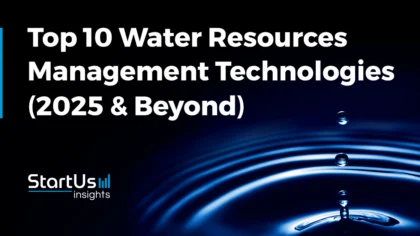
![Dive into the Top 10 Utilities Industry Trends & Innovations [2025]](https://www.startus-insights.com/wp-content/uploads/2025/04/Utilities-Industry-Trends-SharedImg-StartUs-Insights-noresize-420x236.webp)
![Dive into the Top 10 Water Management Trends & Innovations [2025]](https://www.startus-insights.com/wp-content/uploads/2025/04/Water-Management-Trends-SharedImg-StartUs-Insights-noresize-420x236.webp)
